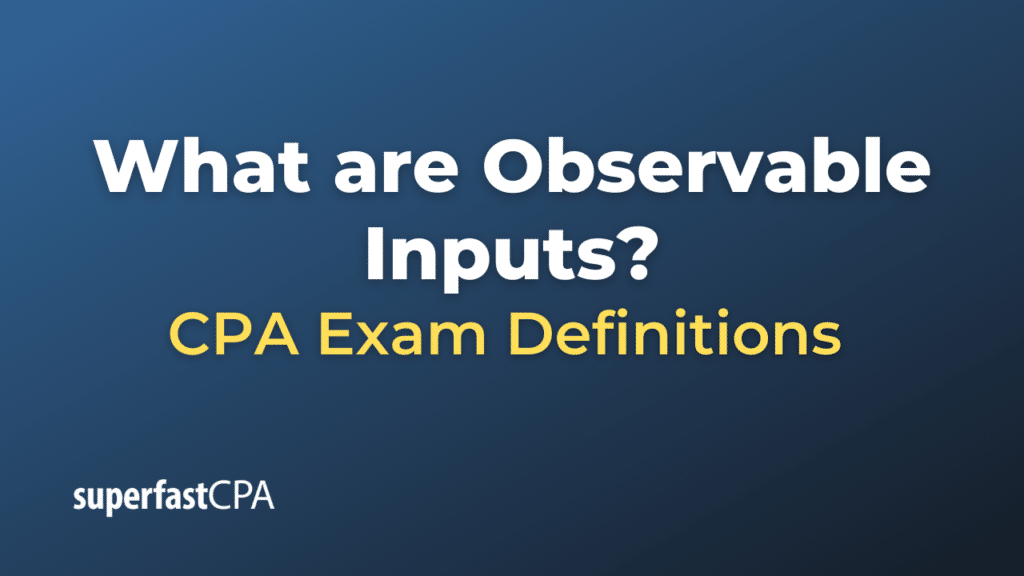Observable Inputs
In the context of financial reporting and valuation, “observable inputs” refer to the assumptions that market participants would use to price an asset or liability, based on market data obtained from sources independent of the reporting entity.
Observable inputs might include quoted prices in active markets for identical assets or liabilities, quoted prices for similar assets or liabilities in active markets, and other types of market information such as interest rates, yield curves, volatilities, prepayment speeds, loss severities, credit risks, and default rates.
The concept of observable inputs is particularly relevant in the context of fair value accounting. According to the accounting standards, fair value measurements are categorized into a three-level hierarchy based on the type of inputs used:
- Level 1 inputs are quoted prices (unadjusted) in active markets for identical assets or liabilities that the entity can access at the measurement date.
- Level 2 inputs are inputs other than quoted prices included within Level 1 that are observable for the asset or liability, either directly or indirectly.
- Level 3 inputs are unobservable inputs for the asset or liability. These inputs reflect the entity’s own assumptions about the assumptions that market participants would use in pricing the asset or liability.
The use of observable inputs (Level 1 and Level 2) is generally preferred over unobservable inputs (Level 3) because they provide more reliable and objective estimates of fair value.
Example of Observable Inputs
Let’s consider a situation where an investment firm owns a considerable number of shares in a publicly-traded company.
- Level 1 Observable Input: The shares owned by the investment firm are traded on an active stock exchange, and the current market price per share is publicly available. This quoted price is a Level 1 observable input. The investment firm can use this price to calculate the fair value of its investment. For example, if the market price is $20 per share and the firm owns 1,000 shares, the fair value of the investment is $20,000.
- Level 2 Observable Input: Suppose the firm also owns corporate bonds that are not traded on an active market. There is no quoted price available for these bonds. However, similar bonds issued by companies with similar credit ratings are actively traded. The prices of these similar bonds can be used as a Level 2 observable input to estimate the fair value of the bonds owned by the firm. The firm might also consider other observable inputs like interest rates and credit spreads.
- Level 3 Unobservable Input : Now, consider the firm has invested in a private company, and there are no quoted market prices or similar assets available to determine the value of this investment. The firm might have to rely on its own assumptions and use financial models to estimate the fair value of this investment. These could include projected cash flows, discount rates, or exit multiples. These are considered Level 3 unobservable inputs.
In each case, the firm is using the best available information to estimate fair value. But it’s clear that Level 1 and Level 2 observable inputs are more reliable and less subjective than Level 3 unobservable inputs.












